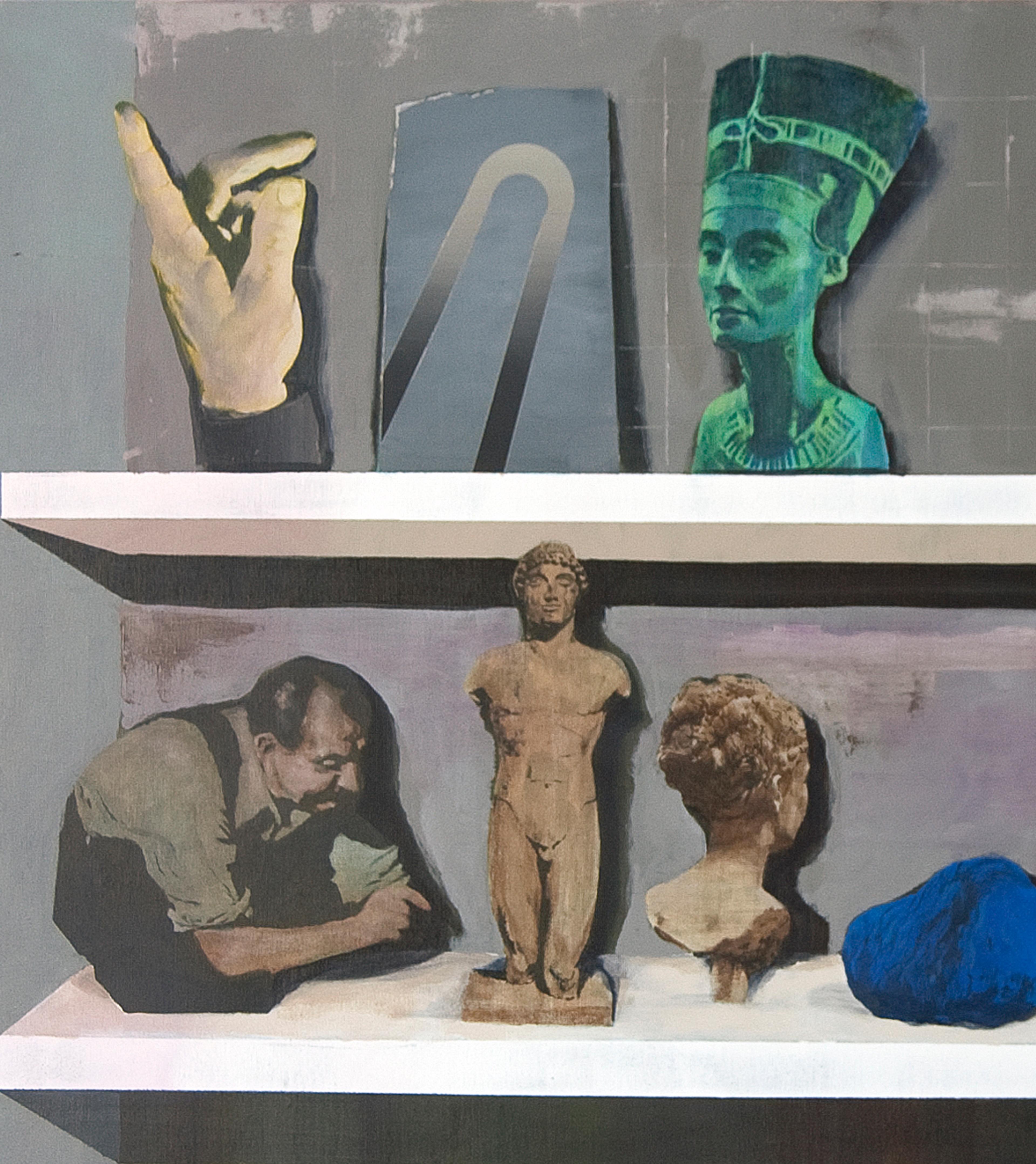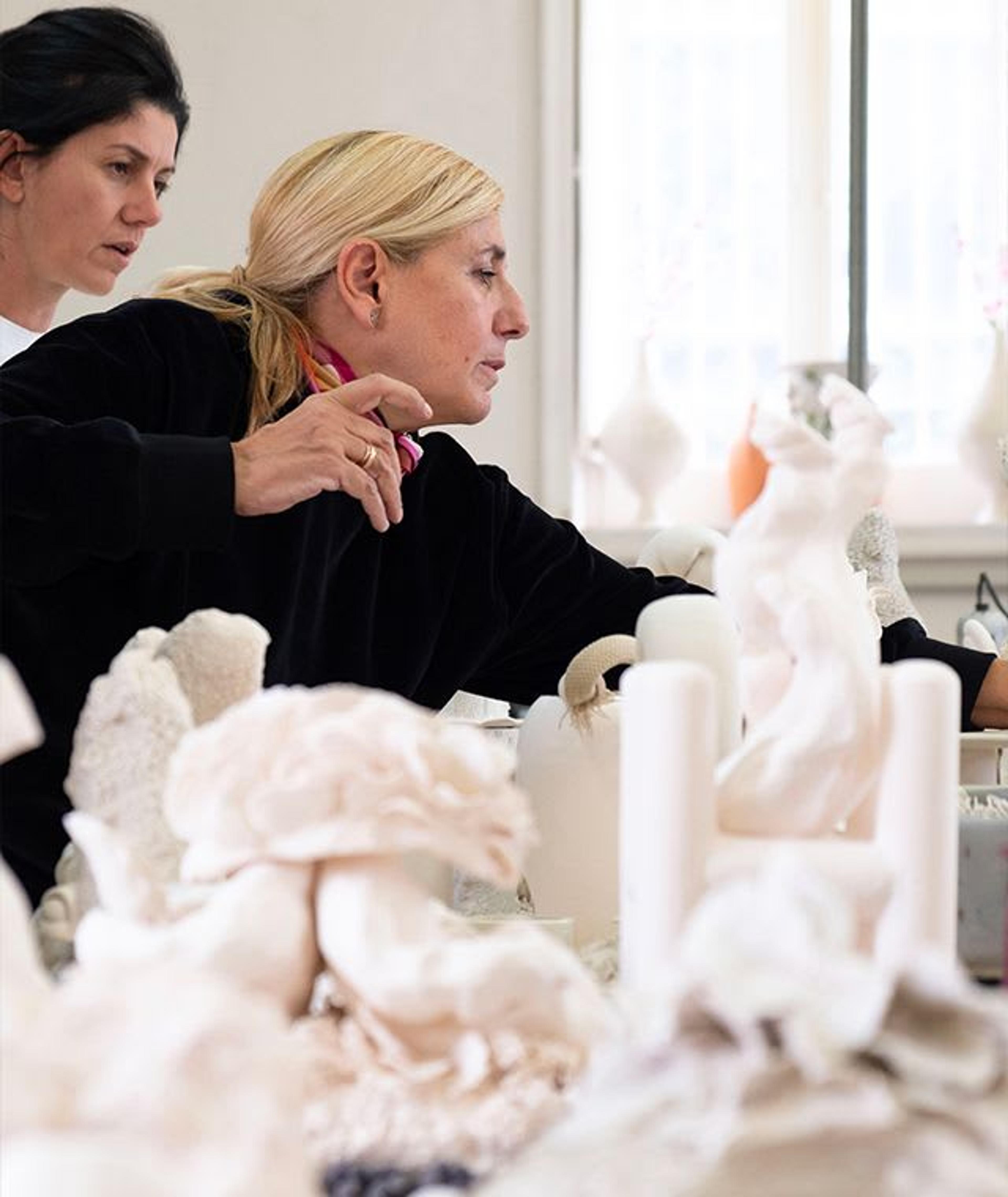
Patricia Urquiola X Made in Edit
Made in Edit presents Hybrida: born from the collaboration between Real Fabbrica di Capodimonte and Patricia Urquiola, the new collection features handcrafted porcelain artworks that tell a story of alchemy and nature. Discover the inspirations and the creative process behind the project.
Born as an independent design brand linked to the residency program of Edit Napoli, Made in Edit is today an avant-garde reality that connects international designers with Italian artisans to create a window of collaborative working and living. The invaluable heritage of traditional craftsmanship sets the stage for the production of excellent design pieces, result of a creative design and artistic research.
Discover Hybrida collection to explore a world in which mosses, lichens and rocks take on a new identity thanks to Patricia Urquiola's drawings and fine handwork. The world-famous designer has worked side by side with the master artisans of the Real Fabbrica di Capodimonte, one of the most important Italian institutions based in the Caselli Institute, born in the 1960s with the aim of continuing the ancient artisan tradition and experimenting new forms and techniques in the porcelain sector.
Meet the Patricia Urquiola and discover her innovative vision where the stylistic elements of the past give way to creatures in transformation, inhabitants of a dimension where the plant, animal and mineral worlds mingle, changing into species of pure visionary nature.
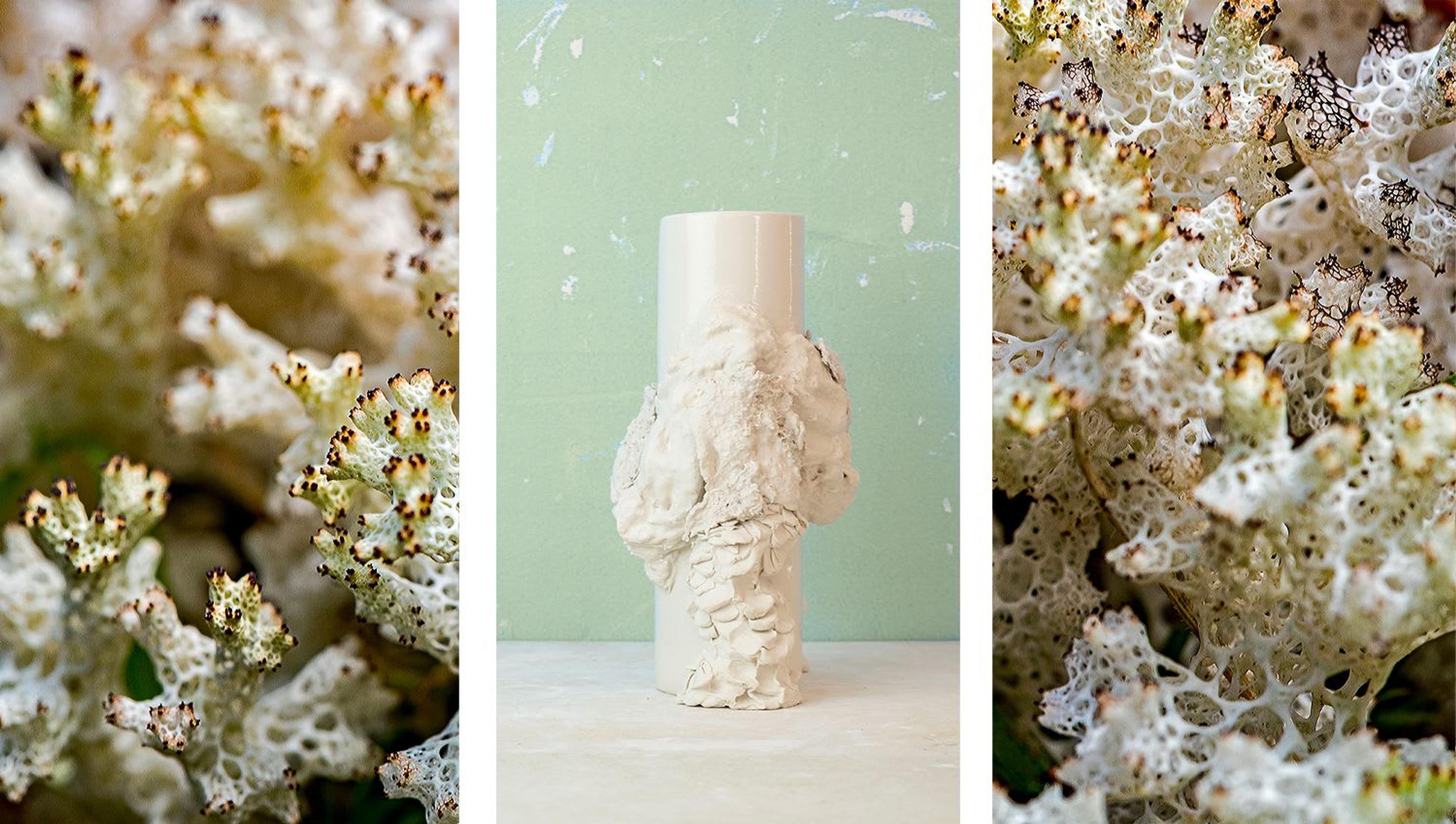
The Hybrida collection is the story of an encounter between your creative vision and the master craftsmen of the Real Fabbrica of Capodimonte. How do you mix the traditional ceramic art with your avant-garde design approach?
For Hybrida I worked closely with the school's artisans and students, adopting an experimental approach, but at the same time respectful and complementary to the techniques that represent Capodimonte. Thus, alongside the more traditional manual processes, we find details obtained by immersing unconventional materials in porcelain, such as sponges and cotton, alongside the mosses of the Real Bosco. We designed objects and centerpieces that bring an ancient typology in a contemporary key. The very high production capacity of Capodimonte's masters and students is thus combined with my imagination recovering distant roots and combining aesthetics.

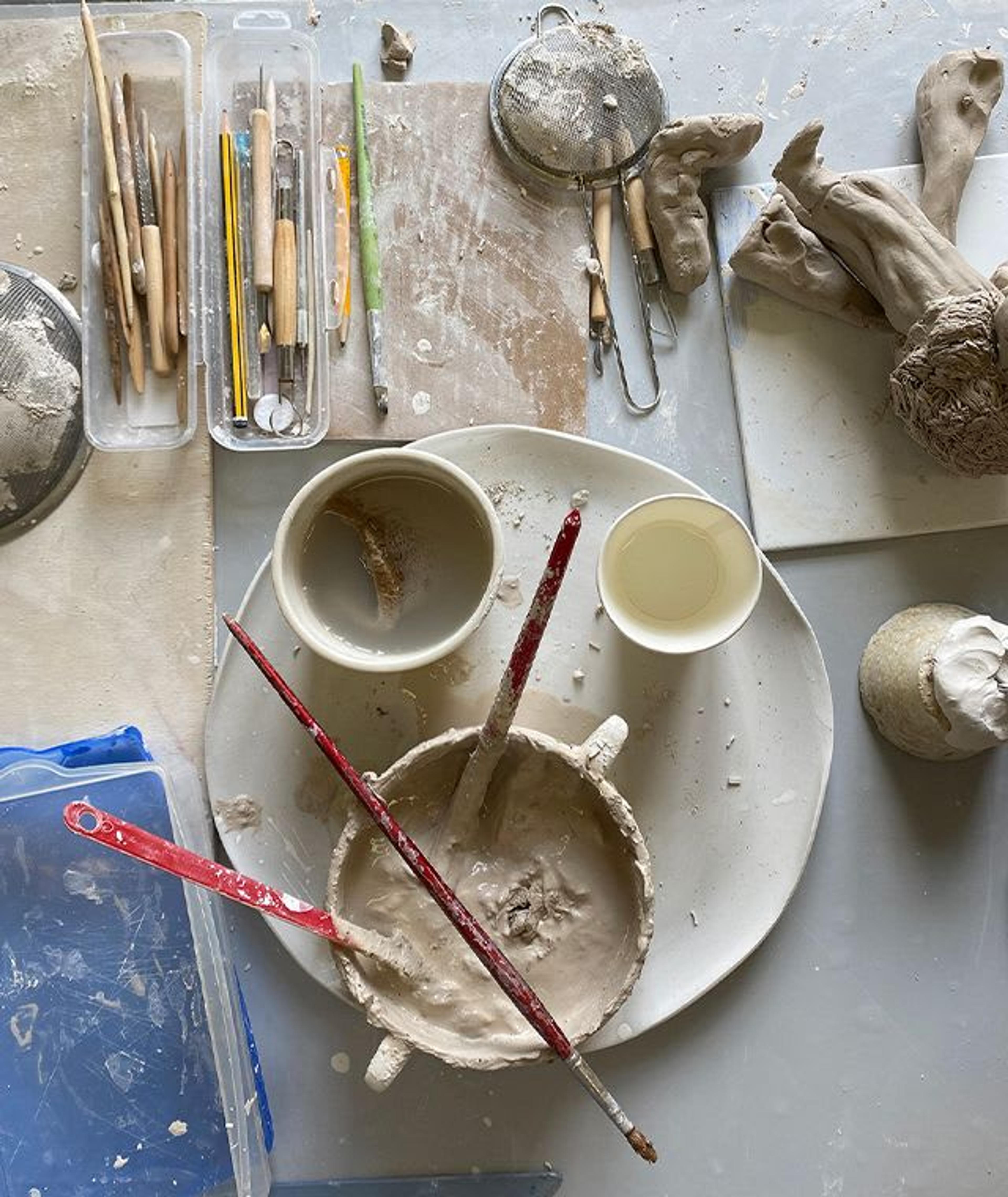
Mosses, lichens and minerals are the great protagonists of this collection, sources of life and inspiration that take a new identity thanks to your unique design approach. Why did you choose these subjects and what is the meaning behind this choice?
These completely white objects reproduce on their 'skin' the motifs and textures of mosses and lichens, with their own beauty and uniqueness. Among them, hybrid human figures emerge, equipped with prostheses that allow them to move more easily in a contemporary reality. These stylistic features of the past give way to creatures in transformation, inhabitants of a dimension where the vegetable, animal and mineral world mix, changing into a visionary species. Objects are, as it were, torn from their state of things and become anthropomorphic organisms, hybrids. The whole scene turns into a dance of nature, a feast of shapes that mix. Borders no longer exist, everything becomes permeable amorphous, a metaphysics of mixing we could say.
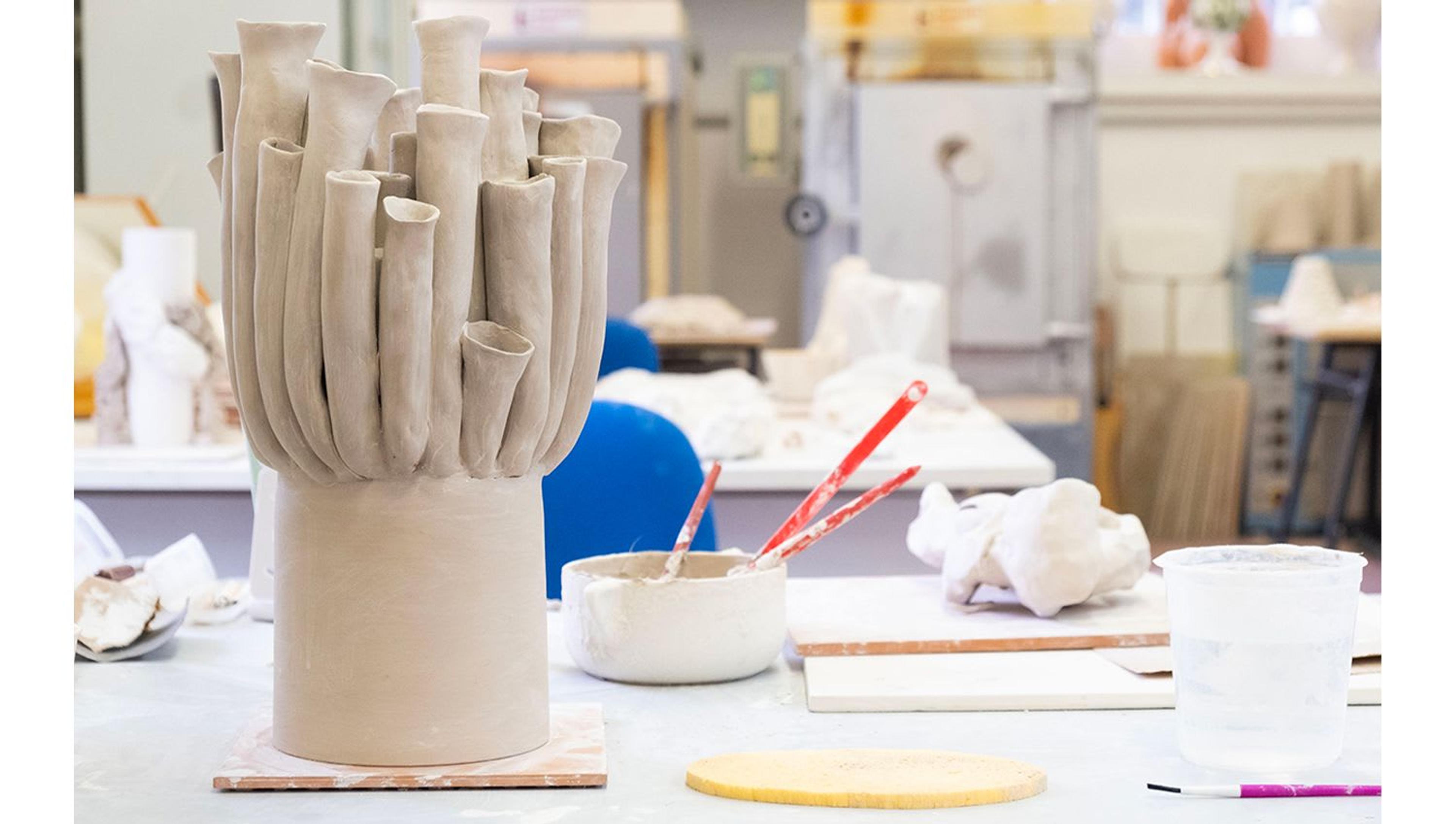
The unique objects of the Hybrida collection compose an authentic “garden on the table”, inspired by the eighteenth-century theme of the great bucolic centerpieces. Tell us about the creative process behind this reinterpretation in a contemporary key.
In the undergrowth of this imaginative place, small shrubs are transformed into glossy enamelled sculptures, while porcelain flowers are interspersed with natural flowers, supported by rope structures that arise from the subsoil like roots. The enchanted garden can be described as a journey, a journey back in time where the protagonist takes on the role of an anthropologist and moves around the earth in search of traces of human presence, and where nature has been greatly compromised; luckily, he discovers a place that had escaped human action for many years had remained prodigiously uncontaminated.
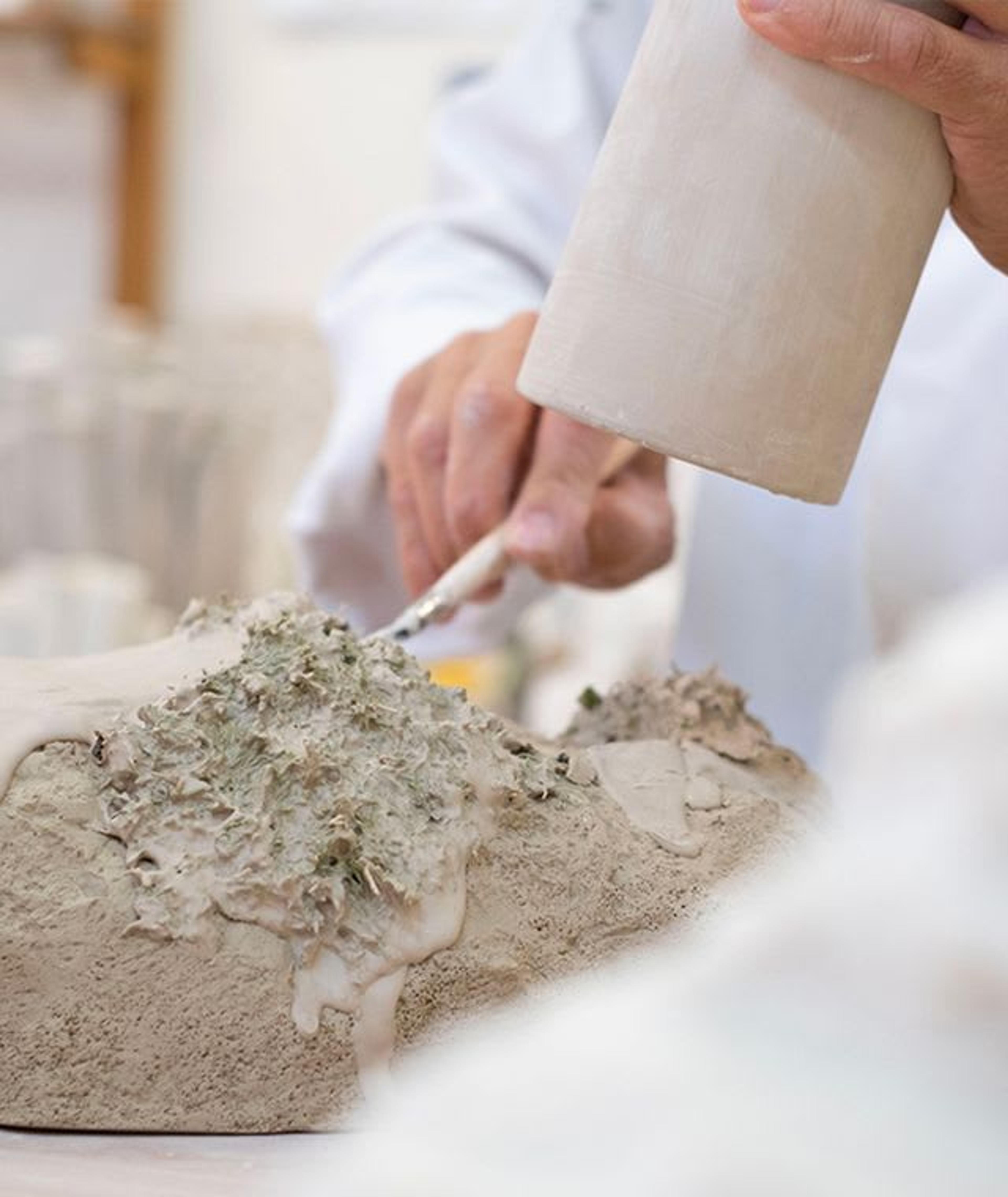
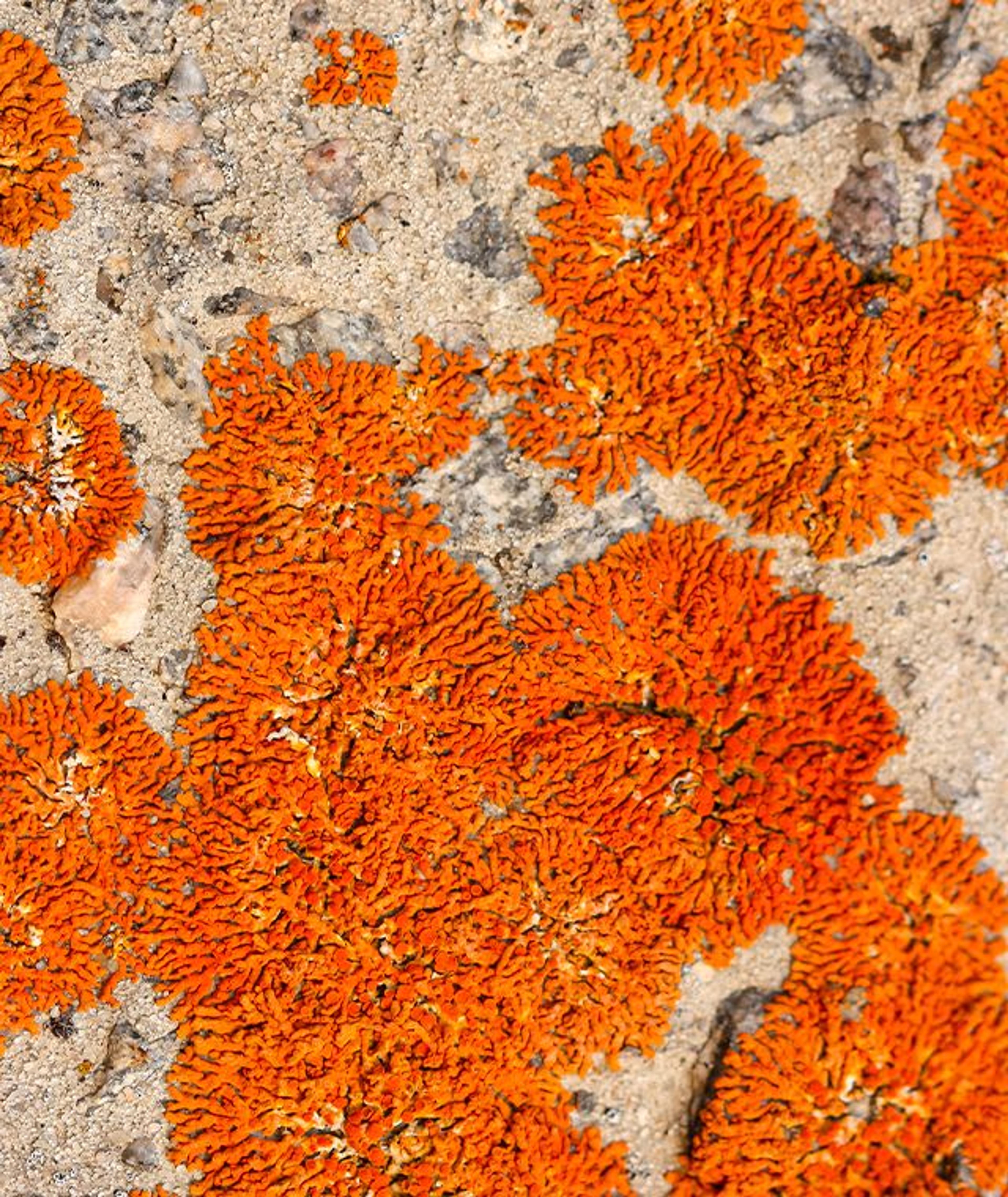
The Campania region, more precisely Capodimonte, was your “home” during the design process and creation of the new collection. What values do you share with the artisanal culture of this region of Italy?
Thinking of my work with porcelain in Capodimonte reminds me of Albedo, which is the second phase of the alchemical transformation. The phase of purification, whitening, femininity, a bit free from rules, just as I too have felt this work. I interpret this alchemical power as the strength we have in changing things, through pure and impure phases to arrive at our 'philosopher's stone', which does not always convert poor metals into gold, but which is really capable of changing our relationship with the environment.
The Istituto Caselli of Capodimonte is the birthplace of the new collection. Founded in the sixties to pass on the ancient craft tradition, it is still an institution today. What advice would you give to the future generations of creatives?
To be open to people, being them colleagues or users, with a non-dominant multicultural approach, as only a work of inclusion, and not exclusion, leads to the creation of quality products. To learn how to choose the right mentors, and to be happy to have a light ‘luggage’ of culture and identity, as they do at the beginning of their journey. Having a light luggage is not necessarily a limit but can indeed turn into a positive aspect, an advantage, since it will allow them to move more easily.
